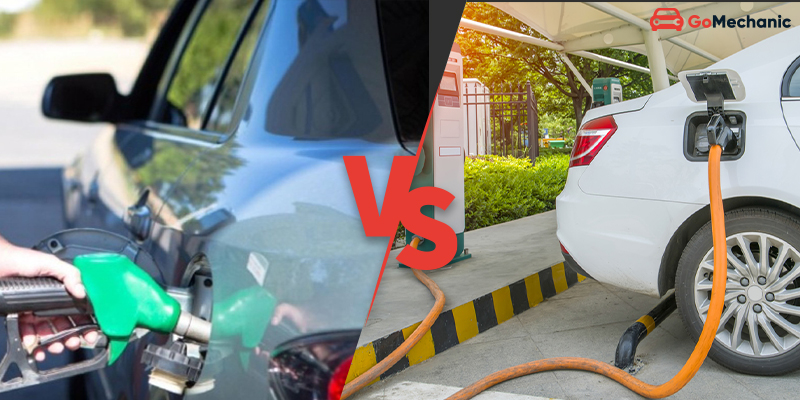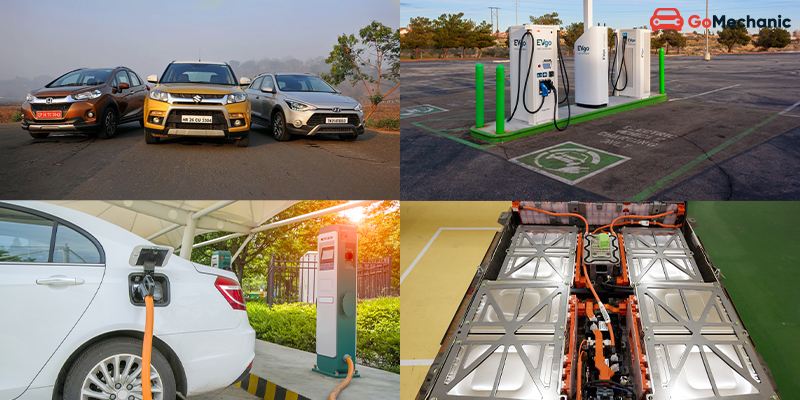The Indian automotive industry has evolved to include both traditional internal combustion engine vehicles and electric vehicles (EVs), as India seeks sustainable mobility. While traditional vehicles have historically dominated the market, the rise of EVs is reshaping the sector, driven by environmental concerns and technological progress.
Traditional Vehicles: The Power Legacy
- Traditional vehicles, powered by internal combustion engines, rely on petrol, diesel, or CNG gas.
- They have a well-established infrastructure but need to improve their infrastructure due to fuel dependency.
- Maintenance costs for traditional vehicles, whether powered by petrol, diesel, or CNG gas, can be expensive.
- Environmental impact is a growing concern, especially regarding air pollution and greenhouse gas emissions.
- Owners often require frequent visits to mechanics for tune-ups, oil changes, and part replacements.
Electric Vehicles: The Modern Frontier
- Electric vehicles (EVs) offer a cleaner and more sustainable alternative to traditional vehicles.
- They reduce air pollution and contribute to a greener future by eliminating the need for fossil fuels.
- Despite higher initial costs, EV owners save on fuel and maintenance in the long run.
- Limited driving range and longer charging times.
- Higher upfront costs compared to traditional vehicles.
- Dependency on electricity grids, which may still rely on fossil fuels.
Accessibility and Performance

- Charging Stations vs. Fuel Stations: One of the primary challenges for electric vehicles is the limited availability of charging stations compared to conventional fuel stations, hindering widespread adoption.
- Availability Across India: Efforts are underway to expand the charging infrastructure across India, with government agencies and private entities initiatives to enhance accessibility.
- Performance: Advancements in electric vehicle technology have addressed performance concerns, with EVs now offering competitive acceleration, range, and driving experience, challenging the notion of inferiority compared to traditional vehicles.
Cost Comparison
Initial Purchase Cost:
- Initial purchase cost is often higher for electric vehicles compared to traditional vehicles.
- Electric vehicles typically require a larger upfront investment due to the cost of battery technology.
- However, this cost difference may be offset by potential savings on fuel and maintenance over the vehicle’s lifespan.
Maintenance and Operational Expenses:
- Electric vehicles generally have lower maintenance and operational expenses compared to traditional vehicles.
- With fewer moving parts and no need for oil changes, electric vehicles often require less maintenance.
- Additionally, electricity costs for charging electric vehicles are typically lower than fuel costs for traditional vehicles.
Consumer Preferences and Trends
- Shifting Preferences Towards Electric Vehicles: Awareness about environmental issues and advancements in electric vehicle technology have influenced consumer preferences, leading to a growing demand for electric cars.
- Factors Influencing Purchasing Decisions: Factors such as range, charging infrastructure, government incentives, and brand reputation play a significant role in consumers’ decisions to switch to electric vehicles.
- Consumer Adoption: As awareness about electric vehicles increases, consumers still encounter barriers such as range anxiety, upfront costs, and a perceived lack of charging infrastructure. However, as technology advances, prices decrease, and infrastructure improves, more consumers are likely to embrace electric mobility as a viable alternative to traditional vehicles.
Challenges and Roadblocks

- Range Anxiety: Concerns regarding the limited range of electric vehicles and the availability of charging stations deter potential buyers from opting for electric cars.
- Battery Technology Limitations: The development of affordable and efficient battery technology remains a challenge for electric vehicle manufacturers, impacting factors like range, charging time, and cost.
- Infrastructure: Insufficient charging infrastructure, particularly in rural areas or regions with limited access to electricity, hinders the widespread adoption of EVs.
- Charging Time: Longer charging times compared to refueling traditional vehicles can inconvenience drivers, particularly for long-distance travel.
Government Incentives
- What incentives does the Indian government offer for electric vehicle buyers? The Indian government has introduced various incentives and subsidies to promote the adoption of electric vehicles, including tax benefits, subsidies on EV purchases, and incentives for manufacturers.
- Tax Benefits and Subsidies: Reduced GST rates, income tax deductions, and financial incentives for EV manufacturers encourage investment in electric mobility solutions.
- Disposing of Old Vehicles through Crushing: In India, government incentives for car scrapping include tax breaks, subsidies, and monetary rewards for owners who voluntarily surrender their vehicles. These measures aim to improve air quality, reduce pollution, and promote road safety.
Environmental Impact
- Comparison of Emissions: Electric vehicles have a significantly lower carbon footprint than traditional vehicles, as they run on electricity generated from renewable sources, reducing greenhouse gas emissions.
- Sustainability Factors: The adoption of electric vehicles aligns with India’s commitment to sustainable development, promoting energy efficiency and reducing reliance on fossil fuels.
- Battery Production: EV battery production demands resources and energy, involving mining for materials like lithium, cobalt, and nickel, contributing to environmental harm. Yet, advancements in battery tech and recycling strive to ease these impacts.
- Electricity Generation: EVs’ environmental impact hinges on electricity sources. With renewables like solar, wind, or hydro, EVs boast a minimal carbon footprint. But if powered by fossil fuels like coal or gas, their environmental benefits diminish.
Future Outlook
- Predictions for the Automotive Market in India: The automotive industry in India is poised for a transformation, with electric vehicles projected to gain substantial market share in the coming years, driven by technological advancements and evolving consumer preferences.
- Potential Advancements and Innovations: Advancements in battery technology, infrastructure development, and government support are expected to accelerate the adoption of electric vehicles and pave the way for a sustainable automotive ecosystem in India.
Conclusion
The shift from traditional vehicles to electric vehicles (EVs) in India highlights a move towards sustainability, driven by environmental concerns and support from government incentives. Despite challenges like higher initial costs and limited charging infrastructure, the benefits of EVs, including lower emissions and cost savings, are steering India’s automotive industry towards a greener future. This trend signals a significant transformation in Indian mobility, with electric vehicles becoming increasingly viable and popular.





